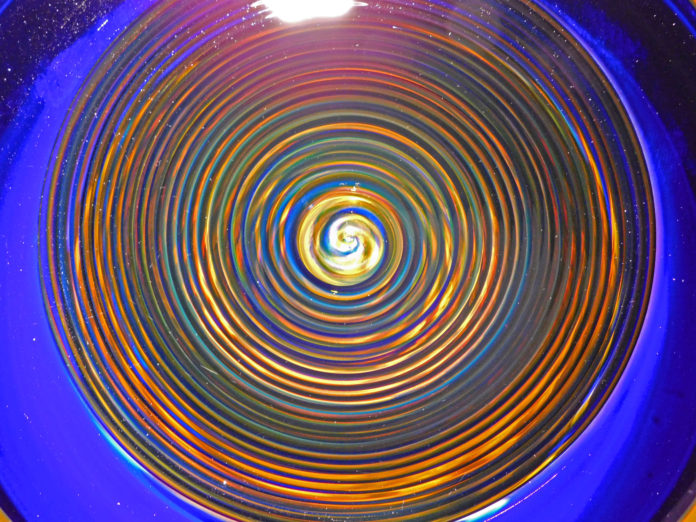Emily Goodman, curator of “Something Pretty” at Morlan Gallery, welcomed viewers to her art talk on Thursday evening. Student grumblings about having to attend the talk as a requirement for class subsided as soon as Dr. Goodman flashed a strangely ethereal beach scene on the wall and asked, “Is this pretty?”
She explained that the word is liberally applied to the work of female artists, and denotes superficiality and temporality. The show was born out of the idea that sometimes, art is just pretty. And that’s okay. However, Dr. Goodman did mention that her focus on the political nature of art is still prevalent in “Something Pretty,” as many of the pieces are social commentaries. The word is diminutive for artists like Justin Favela, whose piñata paper pieces reject cultural romanticization, and Tiffany Calvert, whose glitched flowers beg to be viewed separately from the gender of their creator.
So, what else is pretty? According to the internet, the word is perfectly suited to demure blonde women. Dr. Goodman put a photograph of Carrie Underwood next to La Giaconda, or the Mona Lisa, and asked why one was beautiful and the other, merely pretty. Beauty is eternal, or close to it. It conveys depth and importance. Pretty has no meaning beyond its two syllables and fades with time.
Dr. Goodman said that women do not feel they are able to make pretty art because it will be reduced by a patriarchal world. The pressure to create pieces of substance, pieces worthy of the term “beautiful” is almost exclusively forced onto women. This is no recent phenomenon. Dr. Goodman unpacked the Hierarchy of Genres, a system installed by the Royal Academy as a way to rank the importance of art.
Naturally, women were excluded from the first two tiers — history painting and portraiture — because they required studying male anatomy. They were sequestered to the realm of still life, a genre full of pretty flowers.
History has been relatively unkind to women and minorities, and it is easy to lament the art that never was, simply because the hands that might have created it were too different or too pretty to matter. Easy to lament, but harder to change. “Something Pretty” is a reminder that this change is not impossible, even if it is aesthetically pleasing.




